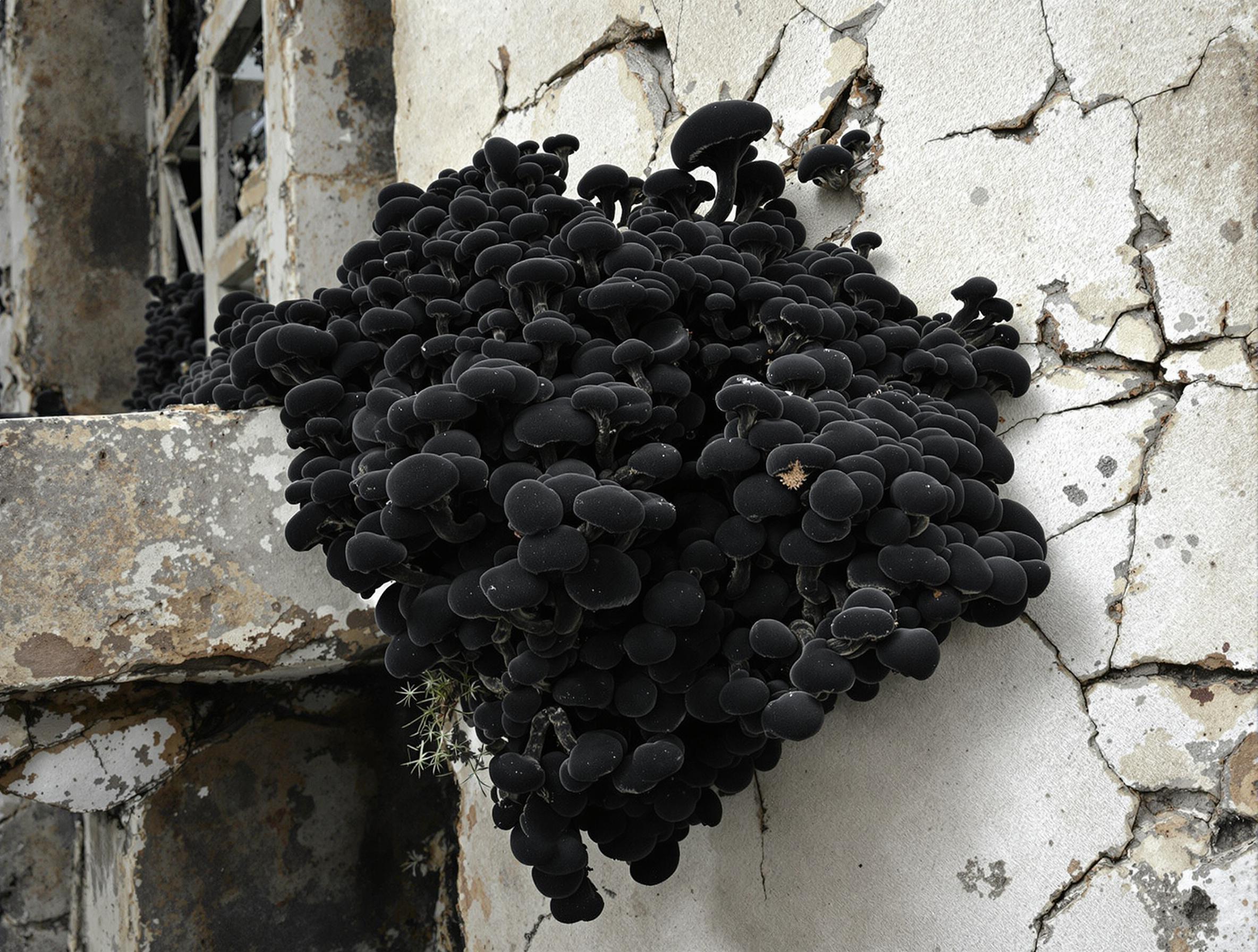Humans destroy what nature creates. But what we struggle to understand is that by killing nature, we are not condemning it. We are condemning ourselves. Because nature does not need us. We, presumptuous and arrogant humans, believe ourselves to be the center of the world. But to nature, we mean nothing. It always finds a way. It prospers, adapts, regenerates. Even in ruin. Even in death.
Chernobyl: April 26, 1986
A fiery night, a sky torn apart by invisible fire. The heart of a nuclear reactor explodes, and with it, the conviction that humans can dominate the atom without consequences shatters. Residents flee. Birds fall. Trees turn white. Time seems to stand still.
And then, silence. A silence that lasts for years.
Life Reborn
But not all life surrendered. Something, in the shadow of the ruins, began to grow. Black as the night, hungry for radiation, in the dead womb of reactor 4, where no human could survive for long, strange organisms began to appear. Black, velvety, silent. Fungi.
At first, they seemed like mere biological waste, molds born in the dark. But then scientists noticed something strange. These fungi, belonging to species like Cladosporium sphaerospermum and Cryptococcus neoformans, not only survived the radiation. They seemed to... thrive.
As if, in a way still to be understood, they drew strength from it.
Creatures from a Sci-Fi Movie
They seem like creatures born from the pen of a visionary writer or the laboratory of a sci-fi director. Fungi that feed on radiation, grown among the ruins of a nuclear reactor. Black, silent, hungry for deadly energy.
If this were a movie plot, we could imagine them coming to life under the ruins, colonizing abandoned structures, and then... who knows. Yet, it is not fiction. It is reality. A reality so surreal it seems invented.
Melanin: The Black Gold of the Apocalypse
What makes them special is melanin, the same pigment that darkens our skin to protect it from the sun. But here, in the realm of plutonium, melanin has another function. It acts like a living battery. It absorbs ionizing radiation and converts it into chemical energy.
A process similar to photosynthesis, but instead of sunlight, there is the constant hum of death. It is radiosynthesis: a phenomenon that, until a few decades ago, was pure science fiction.
A Future Written in Fungi
What can a creature that feeds on what destroys us teach us? According to some researchers, these fungi could become precious allies. They could help decontaminate radioactive environments, protect astronauts during space travel, even serve as a food source in the most hostile places in the universe.
Imagine human colonies on Mars, isolated in the cold and cosmic radiation, surviving thanks to fungal cultures grown in the dark, under protective shells... fungi born from the tragedy of Chernobyl, children of the apocalypse.
A Final Reflection
There is something profoundly poetic — and unsettling — about all this. We unleashed a catastrophe. We created a dead zone. And there, where we thought nothing could exist anymore, something found a way to exist better.
Nature, once again, has responded with a whisper more powerful than any shout: "I adapt." And what if the fungi of Chernobyl are showing us a direction? A path we had not foreseen? A form of life that does not fear our greatest mistake... but transforms it into nourishment?
References:








Leave a Comment